Tokyo Apartment Guide: Overview and Rental Prices in the Shin-Okubo Area
Aug 22, 2025
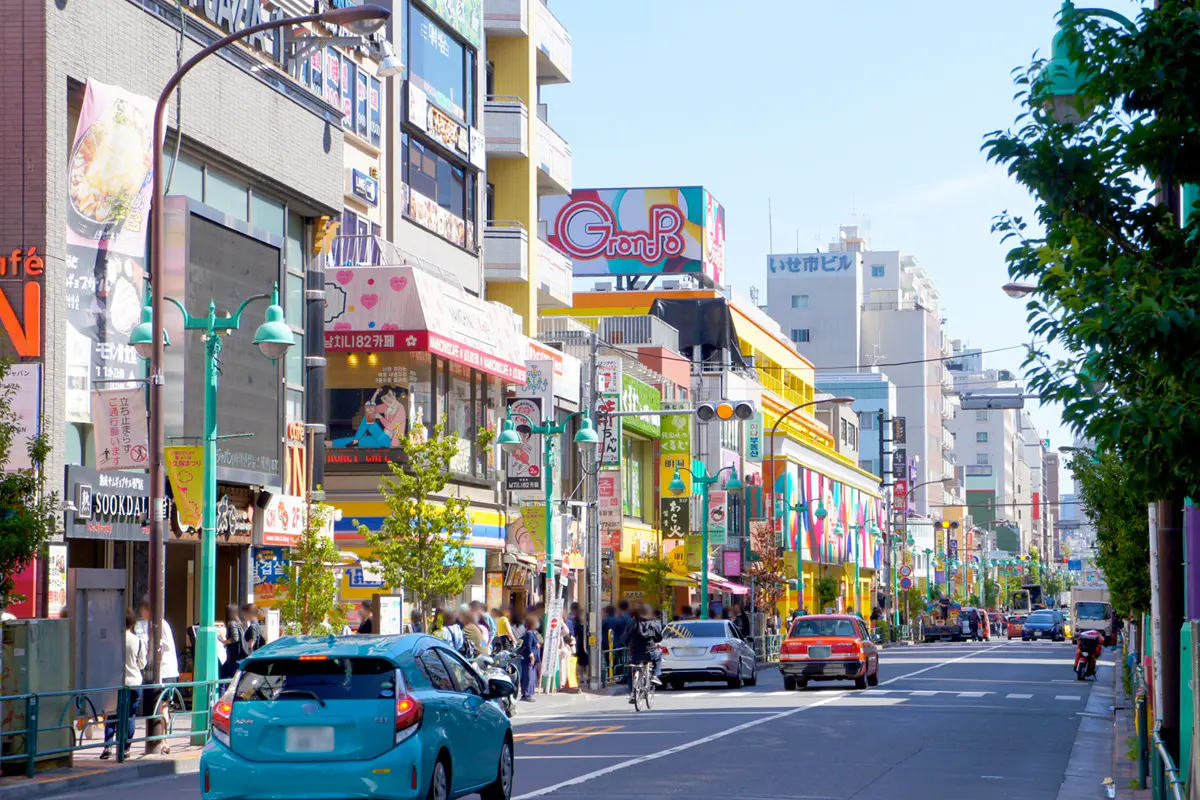
For foreigners looking for their first place to live in Tokyo, Shin-Okubo is one of the most appealing choices. Just one stop away from Shinjuku on the train, the neighborhood is known as a cultural melting pot. With countless Korean restaurants and Asian shops, it is a convenient spot to find familiar ingredients and dishes from home. This article provides an easy-to-follow guide to Shin-Okubo’s unique features and typical rental prices.
What Kind of Neighborhood is Shin-Okubo?
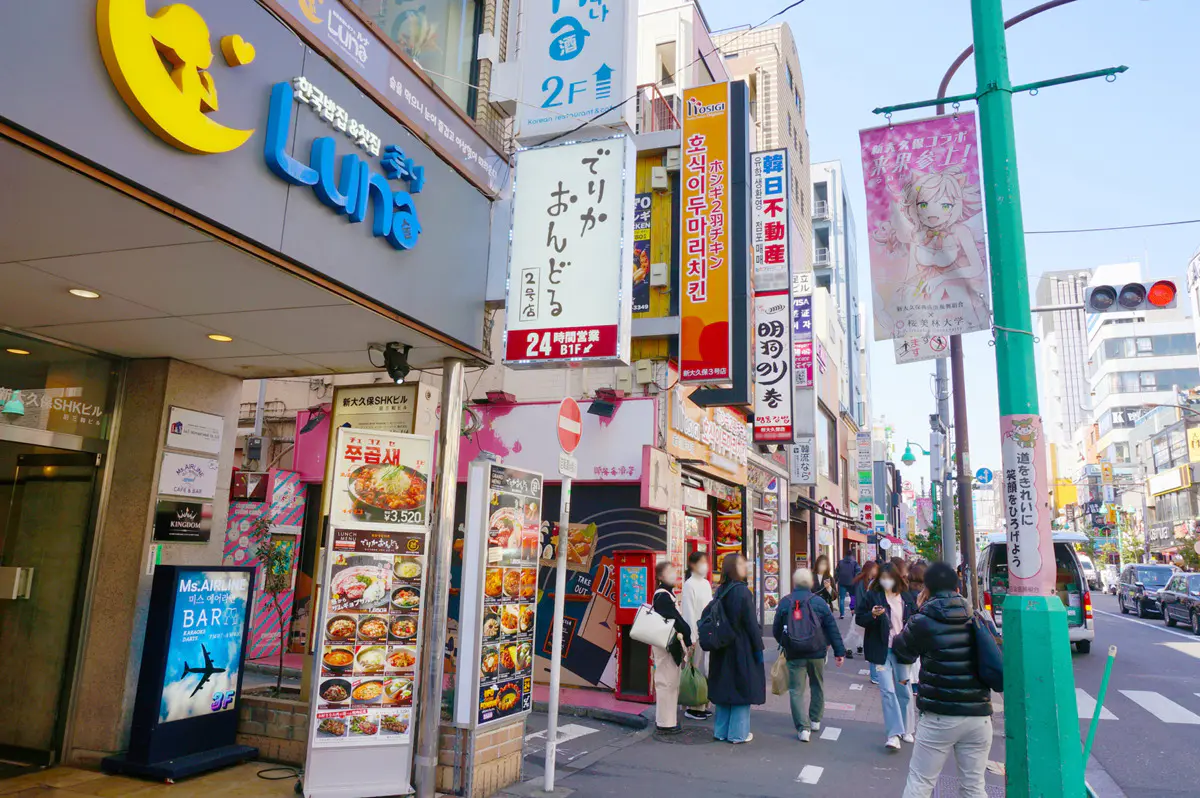
Shin-Okubo, located in Shinjuku Ward, is home to Japan’s largest Koreatown. With the global popularity of Korean dramas and K-pop, the area is especially attractive for fans of Korean culture. However, it’s no longer just about Korea—many international shops and restaurants have opened in recent years, and the area is now evolving into one of Tokyo’s most international districts, with a large student population as well.
The narrow straight alleyways surrounding Shin-Okubo Station reflect the town planning of the Edo era, when this area was home to the samurai gun corps known as the “Teppo Hyakunin.” Today, many small apartment buildings line these streets, housing a diverse international community.
Access and Convenience Around Shin-Okubo Station
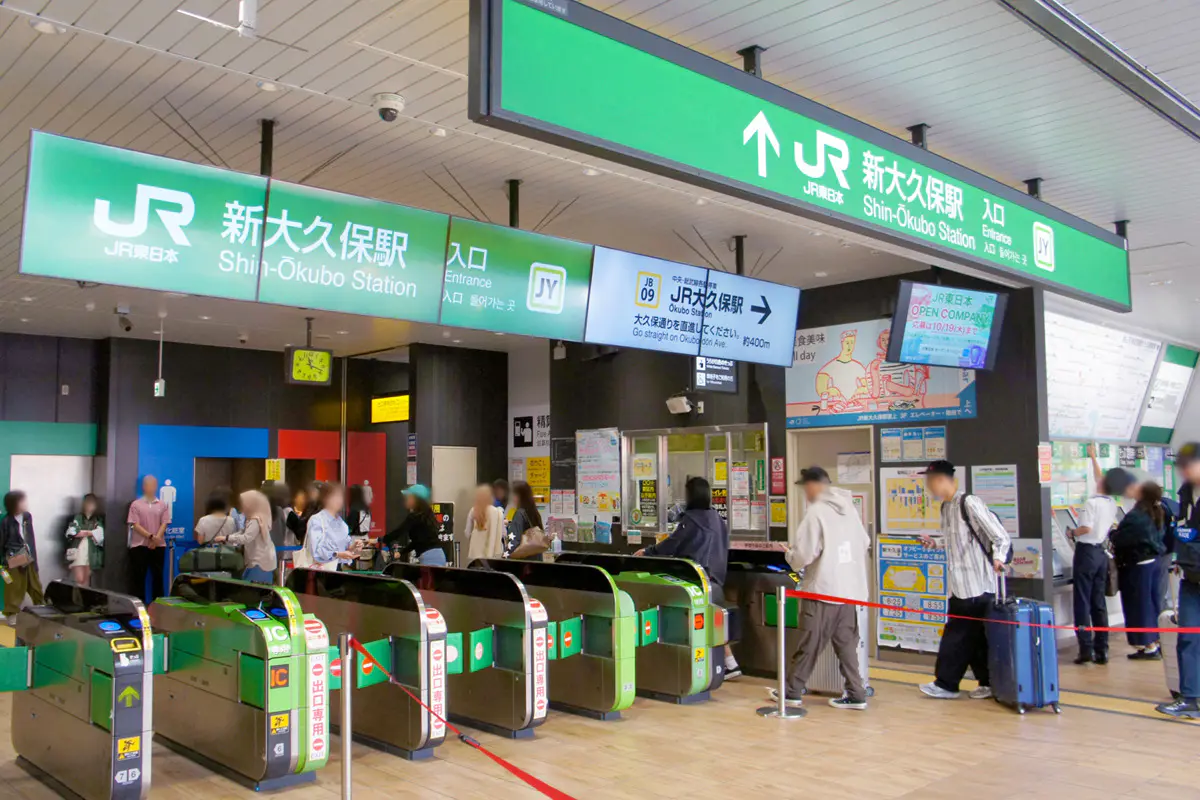
Shin-Okubo offers excellent access at more affordable rent levels compared to Shinjuku Station itself. You can even walk to Shinjuku in just about 15 minutes, making it a prime location for commuters who want convenience without paying Shinjuku-level prices.
Train Information
Shin-Okubo Station sits on the JR Yamanote Line, just one stop from Shinjuku. During morning rush hour, trains run around 20 times per hour, from early morning until late at night, ensuring smooth travel at almost any time of day.
In addition, Okubo Station on the Chuo-Sobu Line and Higashi-Shinjuku Station on the Tokyo Metro are within walking distance. Even if you miss the last train, you can still walk home from Shinjuku in about 15 minutes. This accessibility makes Shin-Okubo a strategic choice for commuting and student life.
| Destination | Travel Time | Example Line |
|---|---|---|
| Tokyo Station | About 30 mins | JR Yamanote Line |
| Shinjuku Station | About 2 mins | JR Yamanote Line |
| Shibuya Station | About 9 mins | JR Yamanote Line |
| Ikebukuro Station | About 6 mins | JR Yamanote Line |
| Yokohama Station | About 40 mins | JR Yamanote Line → Shonan-Shinjuku Line |
Bus Information
Local Toei buses run from Shin-Okubo Station, connecting you directly to destinations such as the National Center for Global Health and Medicine, Iidabashi, Nagatacho, and Shimbashi. With both trains and buses available, everyday travel becomes even more convenient.
Is Shin-Okubo a Comfortable Place to Live? 6 Key Points
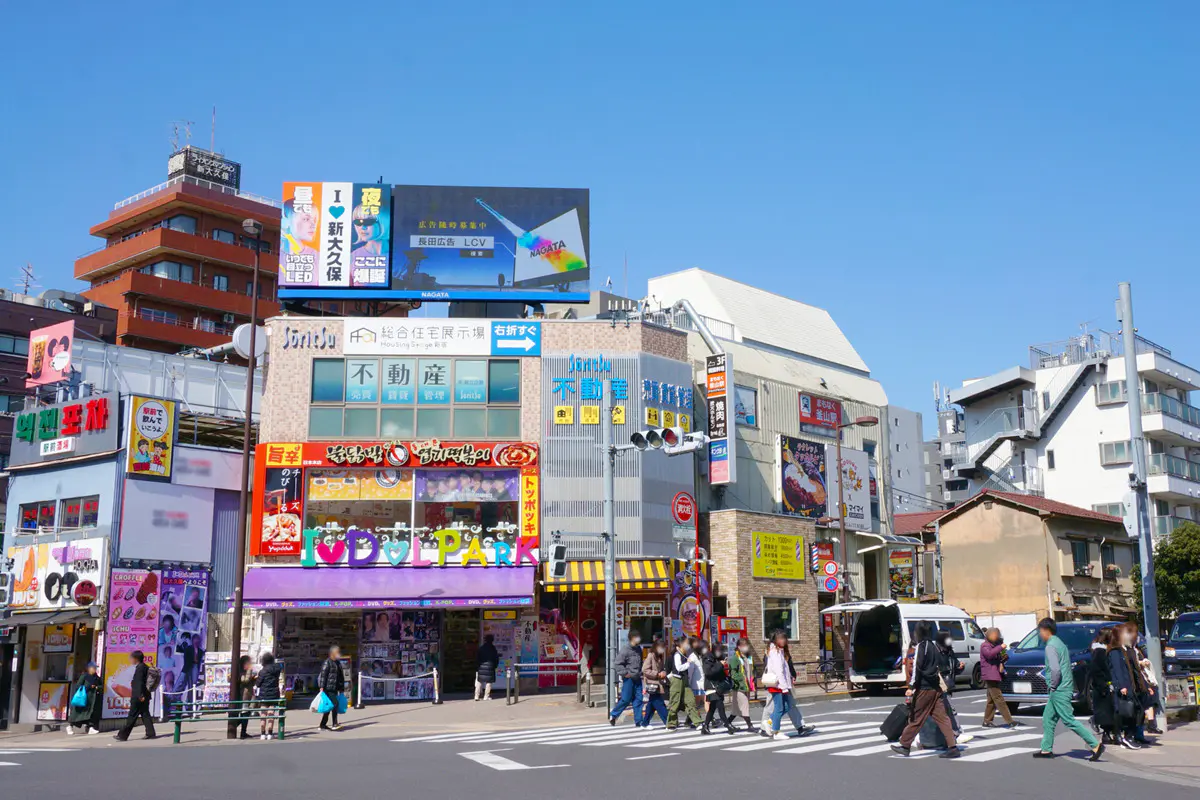
Let’s explore six major reasons why Shin-Okubo is a comfortable place for foreigners to live, covering daily convenience, education, and the local living environment.
Plenty of Supermarkets and Drugstores
One of Shin-Okubo’s biggest advantages is the abundance of everyday shops. There are many 24-hour supermarkets and discount stores such as:
- Niku no Hanamasa Okubo
- Maruetsu Shinjuku Rokuchome
- Don Quijote Shin-Okubo
For budget-friendly bulk groceries, the popular “Gyomu Super Shinjuku Okubo” is another option. In addition, Korean supermarkets like “Kankoku Hiroba” and “Seoul Ichiba” (offering over 2,000 products) make it easy to enjoy authentic Korean food. Shops catering to other cuisines include:
- “VietCook Shinokubo” for Vietnamese ingredients
- “Asia Super Store” for Thai and Asian foods
- “Green Nasco” for Indian groceries
- “THE JANNAT HALAL FOOD” for spices and halal goods
For health and household needs, major drugstores such as Matsumoto Kiyoshi and Cocokarafine are also located nearby.
International Dining Scene
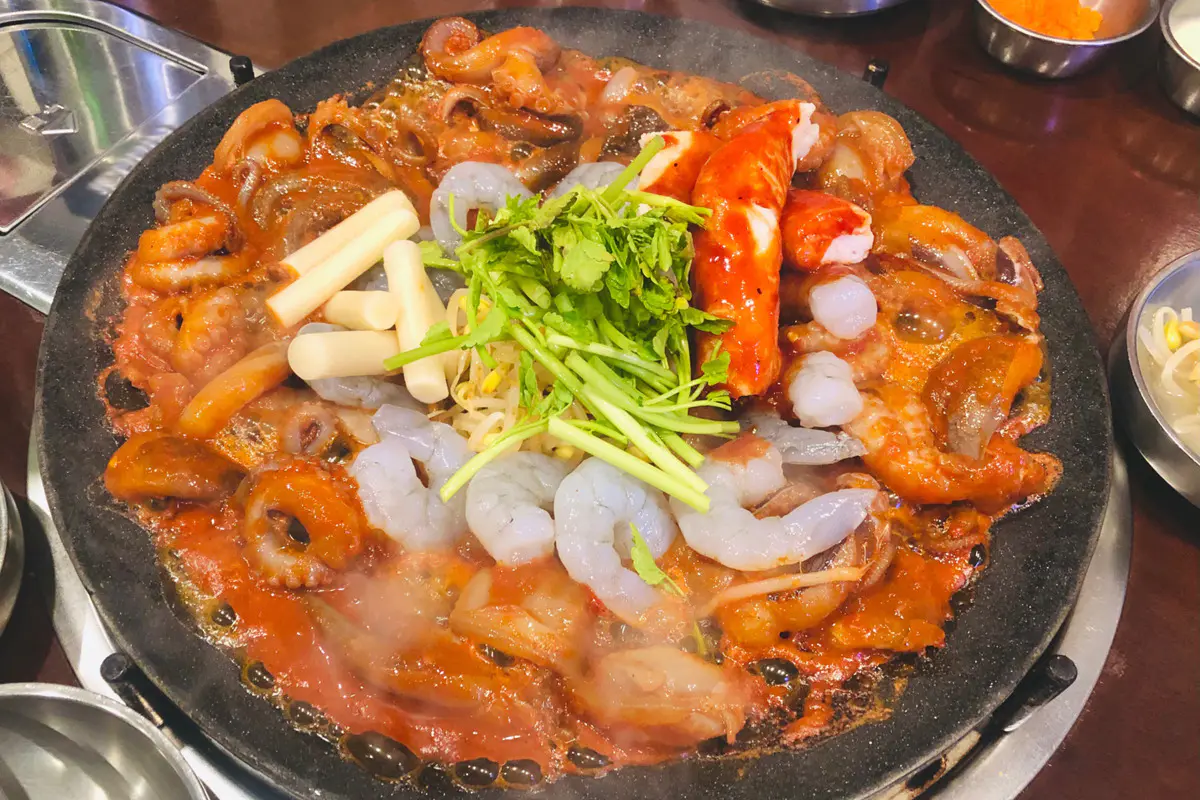
The Shin-Okubo area is one of Tokyo’s top multicultural food destinations. While it is best known for Korean cuisine, you’ll also find Chinese, Vietnamese, Nepalese, Thai, and halal restaurants. Street snacks such as hotteok, tanghulu, 10-yen bread, and Korean corn dogs attract crowds every weekend, especially along Okubo-dori and the famous “Ikemen Street.”
Japanese restaurants are fewer in number, but for many foreigners, this abundance of international options makes Shin-Okubo feel like home.
Public Schools with a Diverse Student Body
For families, education is a key concern. At Okubo Elementary School, located near Shin-Okubo Station, about 60% of students have international roots, including children from India, Canada, Korea, Thailand, Nepal, Bangladesh, the Philippines, and Vietnam.
Notices are distributed in up to nine languages, ensuring that parents with limited Japanese can still follow school life. The school also offers special Japanese language classes for foreign students, with small-group lessons tailored to their level. It’s a supportive and multicultural learning environment.
Abundant Japanese Language Schools
Shin-Okubo is also one of Tokyo’s biggest hubs for Japanese language schools, attracting students from across Asia including China, Korea, Vietnam, Myanmar, Indonesia, Nepal, and Sri Lanka.
Programs range from graduate school prep and business Japanese to general language courses. Some schools boast admission records to top universities such as the University of Tokyo, Waseda, and Keio. With Waseda University nearby, the area is particularly convenient for students.
Green Parks in the City
Despite being a bustling district, Shin-Okubo has several green parks. The largest is Toyama Park, a vast 180,000m² park divided into two areas: Hakoneyama (with the highest hill in Shinjuku offering stunning city views) and Okubo (for sports and relaxation). Other options include Nishi-Toyama Park and Hyakunincho Fureai Park, which feature athletic spaces and playgrounds for families.
Quieter Residential Areas Nearby
Shin-Okubo borders Kabukicho, Japan’s largest nightlife district, so the south side of the station can get noisy at night. For a quieter living environment, families and long-term residents often choose areas north of the station such as Hyakunincho 3–4 chome or Toyama 2–3 chome, which are close to Toyama Park. These neighborhoods are calmer, safer, and well-populated with foreigners, creating an inclusive community.
Rental Market Around Shin-Okubo Station
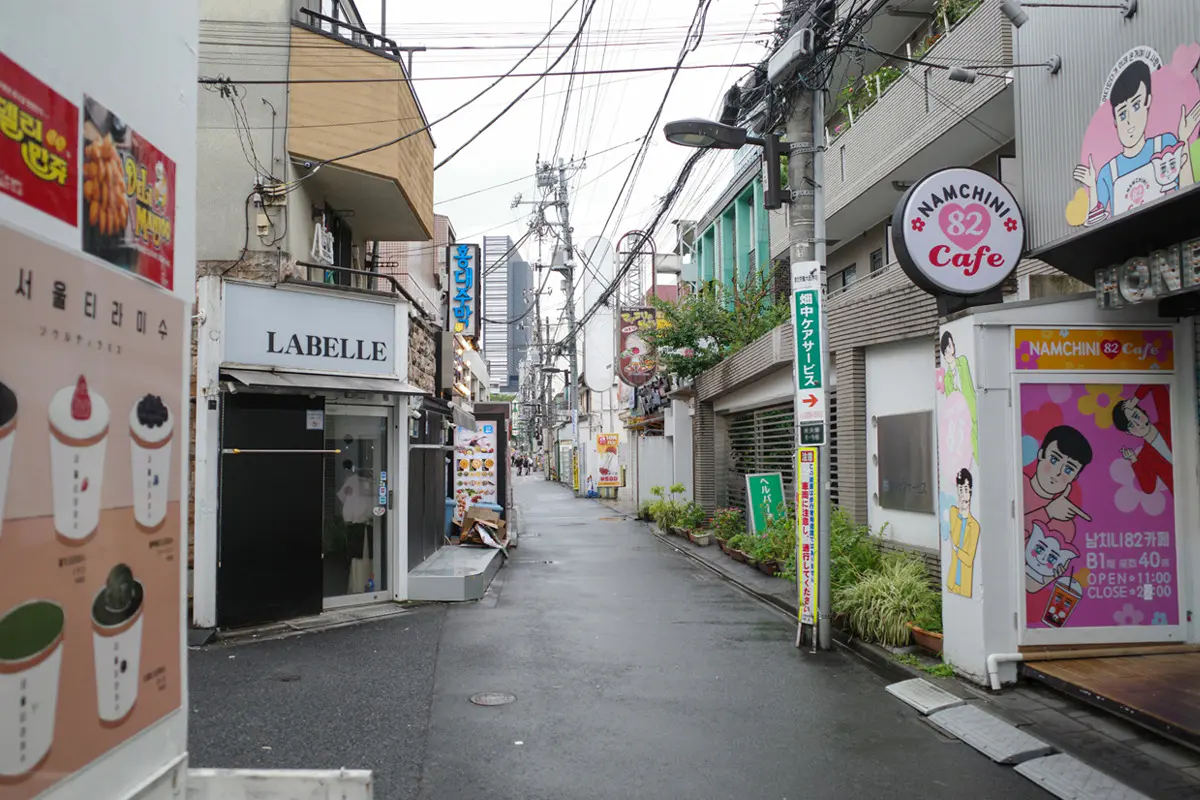
Rental prices in Shin-Okubo are comparable to nearby Takadanobaba but more affordable than Shinjuku or Yoyogi. Considering its Yamanote Line location and excellent access to central Tokyo, it is a cost-effective choice.
| Studio | 1Bed | 2Beds | 3Beds | |
|---|---|---|---|---|
| Shin-Okubo Station | ¥87,700–¥125,000 | ¥153,000–¥204,800 | ¥165,000–¥283,600 | ¥215,100–¥311,200 |
| Shinjuku Station | ¥117,600–¥127,000 | ¥137,000–¥235,000 | ¥181,000–¥312,400 | ¥226,500–¥395,900 |
| Yoyogi Station | ¥122,900–¥147,000 | ¥166,900–¥218,100 | ¥208,000–¥476,000 | ¥428,800–¥701,000 |
Keep in mind that these are only参考 values. Actual rent varies depending on building age, facilities, and walking distance to the station.
If you want affordable rent while maintaining excellent access to central Tokyo, Shin-Okubo is a strong option. For those considering a new life here, feel free to reach out to one of the agents listed on Japan Property—they’ll help you find the apartment that best suits your needs.
Shin-Okubo is Also Popular Among Property Buyers
Thanks to its international vibe and proximity to Shinjuku Station, Shin-Okubo has also attracted strong interest from foreign investors and homebuyers. Condominiums within walking distance of the station are especially valued for both convenience and asset stability, making them popular as investment properties or second homes.
For those considering long-term stays in Japan or looking to own stable assets in central Tokyo, Shin-Okubo and Shinjuku Ward stand out as highly attractive choices.